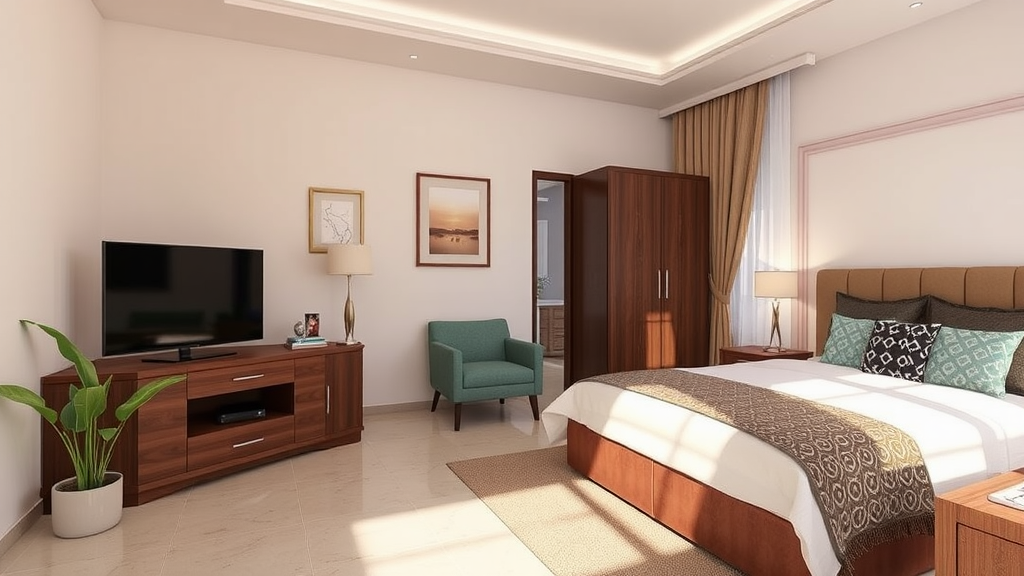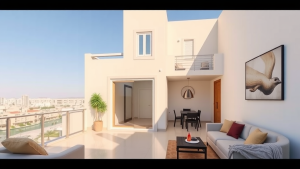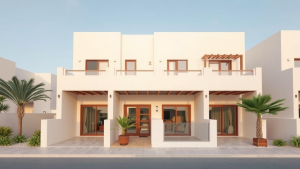Factors influencing flood insurance costs for oceanfront homes in Makadi Bay
When considering oceanfront homes in Makadi Bay, it’s essential to understand the factors that influence flood insurance costs. These costs can vary significantly based on various elements, and being knowledgeable about them can help you make informed decisions. Here’s a closer look at these influential factors.
Location and elevation
The specific location of your oceanfront property is pivotal in determining your flood insurance costs. Homes that are closer to the water source, such as the sea or a river, are at a higher risk of flooding, which typically translates to increased premiums. Additionally, the elevation of your property plays a crucial role. Homes situated at higher elevations tend to have lower insurance costs because they are less prone to flooding.
Flood zone designation
Understanding the flood zone designation assigned to your property is vital. Makadi Bay may have different flood zones classified by FEMA (Federal Emergency Management Agency) based on risk level. Here are key flood zones:
- High-Risk Areas (Zone AE and V): These areas have a greater likelihood of flooding, leading to higher insurance premiums.
- Moderate-Risk Areas (Zone X): Homes here may have lower insurance costs, but it’s still a good idea to consider coverage.
- Low-Risk Areas (Zone X): These areas have the lowest risk of flooding, often resulting in the lowest premiums.
Home characteristics
The architecture and construction materials of your oceanfront home significantly affect your flood insurance cost. For example:
- Building Type: A single-story home may face higher premiums compared to a multi-story building that has flood-resistant features.
- Foundation Type: Properties built on pilings or elevated foundations usually enjoy lower insurance rates.
- Construction Materials: Homes constructed with flood-resistant materials may qualify for discounts on flood insurance premiums.
Past flood claims and loss history
Your home’s flood history can impact your insurance costs. If your property has experienced previous flood claims, insurers may consider it a higher risk, resulting in increased premiums. Moreover, if any past claims were made in your neighborhood, this can also lead to elevated rates for other homes in the vicinity. Prospective homeowners need to research the loss history of their property to understand its implications better.
Insurance coverage and deductibles
The type of coverage you select will significantly influence your insurance costs. Policies typically include:
- Building Coverage: This covers the physical structure of your home. The higher the coverage amount, the higher the premium.
- Contents Coverage: This protects personal belongings within the home. Including this coverage will increase costs, but it may be valuable for oceanfront homeowners.
Additionally, choosing a higher deductible can lower your premium. However, be sure you can afford the deductible amount in case of a flood.
Market influences
The overall real estate market in Makadi Bay can also affect flood insurance costs. If oceanfront properties are in high demand, insurers might raise their rates to match market conditions. Conversely, during slower times in the market, rates may stabilize or decrease. Keeping an eye on market trends can help you anticipate changes in your insurance premiums.
Risk management measures
Implementing risk management measures and flood mitigation strategies in your oceanfront home can lower your premiums significantly. Some practical options include:
- Installing flood vents that allow water to flow in and out of the home.
- Landscaping in a way that directs water away from the foundation.
- Maintaining an updated elevation certificate to prove your home meets compliance standards.
These measures may not only protect your property but also provide financial benefits in terms of lower insurance costs.
By understanding these factors and assessing your specific situation, you can better estimate the flood insurance costs associated with oceanfront homes in Makadi Bay. Being informed allows you to make strategic decisions about coverage while safeguarding your investment against potential flood risks.
The importance of understanding flood zones and risks for coastal properties
Understanding flood zones and risks is crucial for anyone looking to own coastal properties. Coastal areas, especially those near the ocean, are often susceptible to flooding due to storms, rising sea levels, and heavy rainfall. Knowing your flood zone can significantly impact your property’s safety, insurance costs, and resale value.
Flood zones are geographical areas that represent varying levels of flood risk. These are typically designated by federal and local government agencies. By identifying which zone a property is in, homeowners can assess the potential risks and prepare accordingly. Here’s why understanding these zones is essential for coastal property owners:
Impacts on insurance costs
The flood zone designation of a property plays a significant role in determining flood insurance rates. Properties located in high-risk areas generally require more expensive insurance coverage compared to those in lower-risk zones. Here’s how different flood zones may affect your insurance:
- High-Risk Flood Zones (A and V): Homes here have a higher likelihood of flooding and are mandated to have flood insurance if they have a federally backed mortgage.
- Moderate- to Low-Risk Zones (B, C, and X): Properties within these areas may not require flood insurance, but it’s still a wise decision to consider coverage due to potential risks.
Being aware of your zone can lead you to make informed decisions about insurance, which can save you money in the long run.
Safety and preparedness
In addition to financial implications, understanding flood zones directly relates to safety. Knowing whether your home is in a high-risk area enables you to take necessary precautions to protect yourself and your property. Consider implementing these safety measures:
- Elevate Your Property: If you’re in a high-risk zone, elevating your home can minimize damage from potential flooding.
- Flood-Proofing: Invest in flood-proofing techniques, such as sealing basement walls and installing sump pumps.
- Emergency Plans: Create a flood emergency plan that includes evacuation routes and communication strategies.
Preparing for the worst can provide peace of mind and potentially save lives during an emergency.
Long-term value and resale potential
The flood zone of a property can significantly affect its long-term value. Homes in high-risk areas often face depreciation, especially if natural disasters occur frequently. Here’s how flood zones can impact resale:
- Marketability: Properties in low-risk zones tend to attract more buyers, making them easier to sell.
- Value Assessments: Flood risk can lead to lower appraisals, making financing more difficult for prospective buyers.
- Insurance Requirements: Potential buyers may be deterred by expensive insurance requirements for high-risk properties.
Being informed about your flood zone can help you keep your property’s value steady, ensuring that you make wise investment choices.
Changing climate and evolving risks
The discussion surrounding flood zones is becoming increasingly important due to climate change. As sea levels rise and weather patterns become more unpredictable, many areas that were previously considered safe may now face greater flood risks. Homeowners must stay informed about these evolving risks:
- Regular Updates: Check with local authorities or the Federal Emergency Management Agency (FEMA) for updated flood maps and risk assessments.
- Community Awareness: Join local groups focused on climate change and flood awareness to stay informed about developments.
Engaging in community discussions can empower homeowners to advocate for better flood management and infrastructure improvements.
Understanding flood zones and their implications is vital for anyone considering a coastal property purchase. This knowledge can guide you in making sound financial decisions, ensuring safety during emergencies, and protecting your investment over time. Embrace this information as a key component of coastal property ownership, helping you navigate the risks and rewards that come with living in these beautiful yet vulnerable regions.
Estimating flood insurance costs for oceanfront homes in Makadi Bay requires a comprehensive understanding of several key factors. Primarily, the unique characteristics of your property, including its elevation, proximity to the shoreline, and the building’s design, play a significant role in determining your insurance premium. Additionally, the review of local flood zones and historical data on flooding events in the area can provide valuable insights. If your home is located in a high-risk flood zone, expect higher insurance costs compared to properties in lower-risk areas.
Understanding flood zones and associated risks is crucial for coastal property owners. These zones categorize properties based on their risk of flooding, helping you to make informed decisions regarding insurance needs. Engaging with local officials can shed light on specific regulations tied to flood insurance that could affect your costs. Moreover, being proactive about flood preparedness measures, such as elevation or installation of flood vents, can not only mitigate risks but may also reduce your insurance premiums.
By thoroughly researching and considering these factors, homeowners in Makadi Bay can make better-informed decisions and secure adequate coverage to protect their investment. The right flood insurance policy not only acts as a safety net but also provides peace of mind as you enjoy the beauty of coastal living. As you navigate the intricacies of estimating flood insurance costs, remember that knowledge is your most powerful tool in safeguarding your oceanfront property from unexpected challenges.











